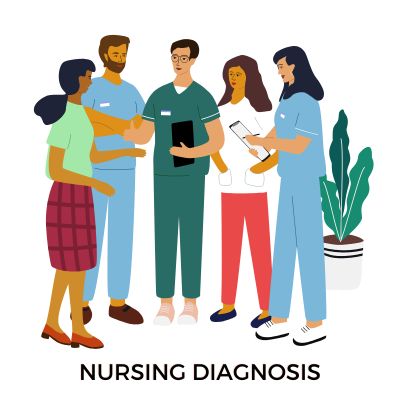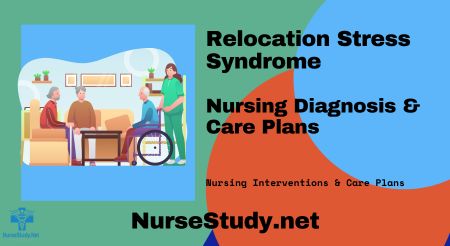Relocation stress syndrome is a psychological condition that occurs when an individual or a family moves from one environment to another.
It is a challenging and often difficult condition that can manifest in a range of physical and emotional symptoms. The condition is characterized by confusion, anxiety, and difficulty in adjusting to a new environment.
This syndrome is often seen in elderly individuals who move to a long-term care facility or critical care unit, but it can also affect anyone who has recently moved to a new location.
Relocation can be a challenging experience, and it can cause a range of psychological and physical symptoms. Individuals who experience relocation stress syndrome may feel disoriented, apprehensive, and withdrawn.
They may also experience psychological distress, fear, anger, withdrawl, powerlessness, and impaired self-esteem. Physical signs of relocation stress syndrome can include difficulty sleeping, insomnia, and increased risk of illness.
There are several risk factors associated with relocation stress syndrome, including cultural change, economic change, premature termination of significant relationships, lack of preparedness, insufficient knowledge of the new environment, overextension of resources, loss of personal identity, low social support, and alternative Nanda nursing diagnoses.
Causes of Relocation Stress Syndrome
Relocation stress syndrome can be caused by a variety of factors, including personal trauma, unexpected life changes, financial difficulties, cultural differences, and lack of support. In some cases, this condition can be triggered by negative thoughts and feelings surrounding the relocation.
- Personal Trauma
- Unexpected Life Changes
- Financial Difficulties
- Cultural Differences
- Lack of Support
Related Conditions
Relocation stress syndrome (RSS) is a condition that is often associated with other medical conditions. These related conditions can either exacerbate the symptoms of RSS or be caused by the stress of relocation itself. Here are some of the most common related conditions:
- Depression and Anxiety
- Loneliness
- Cognitive Impairment
- Physical Health Problems
- Substance Abuse
Signs and Symptoms of Relocation Stress Syndrome
Relocation stress syndrome is a condition characterized by a range of symptoms that occur due to the changes and anxieties associated with the relocation process. Here are some of the signs and symptoms of RSS:
- Anxiety
- Depression
- Sleep disturbances
- Physical symptoms
- Cognitive symptoms
- Behavioral symptoms
Expected Goals and Outcomes of Relocation stress syndrome
The diagnosis of RSS includes a person who is moving from one residence to another, or from one country to another.
The expected goals and outcomes of RSS are to help the individual adjust to the new environment and reduce the symptoms associated with the condition. The following are some of the expected short-term goals that can be achieved within three months:
- The resident will become independent in moving to and from areas within the facility.
- The resident will react in a positive manner to staff effort to assist in adjusting to nursing home placement.
- The resident will participate in activities of daily living (ADLs) with minimal assistance.
- The resident will demonstrate an understanding of the daily routine and schedule of the facility.
In addition to the short-term goals, there are also expected long-term goals that can be achieved within six months to one year:
- The resident will demonstrate an ability to make decisions regarding their care and participate in care planning.
- The resident will participate in social activities and events within the facility.
- The resident will maintain relationships with family and friends outside of the facility.
- The resident will demonstrate an ability to cope with stress and anxiety associated with relocation.
The expected outcomes of RSS are to improve the overall well-being of the individual and reduce the negative impact of relocation stress. These outcomes can be achieved through a comprehensive plan that includes nursing interventions, counseling, and support from family and friends.
Nursing Assessment and Rationales for Relocation Stress Syndrome
When assessing a patient for relocation stress syndrome, the nurse should consider the patient’s age, cognitive function, and previous living situation.
The nurse should also assess the patient’s emotional state, including anxiety, depression, and feelings of loss or grief. The nurse should observe the patient’s behavior for signs of confusion, disorientation, and agitation.
The nurse should also assess the patient’s physical condition, including vital signs, hydration status, and nutritional status.
According to NANDA, the nursing diagnosis for relocation stress syndrome is “a state in which an individual experiences confusion and difficulty in adjusting to a new environment as a result of relocation” [1].
The nursing assessment should be focused on identifying the patient’s specific symptoms related to this diagnosis. The nurse should use a comprehensive approach to assess the patient’s physical, emotional, and cognitive functioning.
The rationale for this assessment is to identify the patient’s specific needs related to relocation stress syndrome. By identifying the patient’s symptoms and needs, the nurse can develop an individualized care plan that addresses the patient’s physical, emotional, and cognitive needs.
The care plan should include interventions to reduce the patient’s anxiety, promote socialization, and support the patient’s adjustment to the new environment.
In addition to the nursing assessment, the nurse should also collaborate with the patient’s healthcare team to identify any underlying medical conditions that may be contributing to the patient’s relocation stress syndrome.
The nurse should also involve the patient’s family and caregivers in the care plan to ensure that the patient receives appropriate support and care.
[1] NANDA International. (2018). Nursing diagnoses: Definitions and classification 2018-2020. Thieme.
Nursing Interventions and Rationales for Relocation Stress Syndrome
Nurses play a crucial role in assisting patients with relocation stress syndrome. The following are some nursing interventions and rationales that can be used to help patients cope with the stress of relocation.
Assessment
Assessment is the first step in helping patients cope with relocation stress syndrome. Nurses should assess the patient’s physical, emotional, and psychological needs to determine the appropriate interventions.
Communication
Effective communication is essential in helping patients cope with relocation stress syndrome. Nurses should communicate with the patient and their family members to understand their concerns and fears about the relocation process. This can help the nurse develop an individualized care plan that meets the patient’s needs.
Education
Education is an important nursing intervention in helping patients cope with relocation stress syndrome. Nurses should educate patients and their family members about the relocation process, including what to expect during the move and how to prepare for the move. This can help reduce anxiety associated with the relocation process.
Medication
Medication can be used to help patients cope with the physical and psychological symptoms of relocation stress syndrome. Nurses should work with the patient’s provider to determine the appropriate medication and dosage based on the patient’s needs.
Support
Support is an important nursing intervention in helping patients cope with relocation stress syndrome. Nurses should provide emotional support to patients and family members throughout the relocation process.
Environment
The environment can have a significant impact on a patient’s ability to cope with relocation stress syndrome. Nurses should ensure that the patient’s new environment is safe, comfortable, and familiar. This can help reduce anxiety and stress associated with the relocation process.
Similar NANDA Nursing Diagnoses

Relocation stress syndrome (RSS) is a unique diagnosis that is characterized by a range of symptoms that occur due to the changes and anxieties associated with the relocation process. However, there are other diagnoses that share some similarities with RSS. These diagnoses include:
Anxiety
Anxiety is a common response to stress and can be a symptom of RSS. However, anxiety can also be a standalone diagnosis.
Adjustment Disorder
Adjustment disorder is a diagnosis that is made when a person has difficulty coping with a stressful life event.
Post-Traumatic Stress Disorder (PTSD)
PTSD is a diagnosis that is made when a person has experienced or witnessed a traumatic event.
Depression
Depression is a diagnosis that is made when a person experiences persistent feelings of sadness or loss of interest in activities.
Frequently Asked Questions
What are the symptoms of relocation stress syndrome?
Relocation stress syndrome (RSS) can manifest in a variety of ways, including anxiety, depression, confusion, disorientation, and physical symptoms such as headaches or digestive issues. These symptoms can be mild or severe and may last for several weeks or even months.
Who is at risk for relocation stress syndrome?
Anyone who experiences a significant change in their living situation, such as moving to a new home or entering a long-term care facility, may be at risk for RSS. However, elderly individuals and those with pre-existing medical conditions may be more susceptible to the syndrome.
How does relocation stress syndrome affect young adults?
While RSS is often associated with elderly individuals, young adults can also experience the syndrome. Symptoms may include feelings of isolation, difficulty making new friends, and struggles with adapting to a new environment.
References
Ackley, B. J., Ladwig, G. B., Makic, M. B., Martinez-Kratz, M. R., & Zanotti, M. (2020). Nursing diagnoses handbook: An evidence-based guide to planning care. St. Louis, MO: Elsevier.
Gulanick, M., & Myers, J. L. (2022). Nursing care plans: Diagnoses, interventions, & outcomes. St. Louis, MO: Elsevier.
Ignatavicius, D. D., Workman, M. L., Rebar, C. R., & Heimgartner, N. M. (2020). Medical-surgical nursing: Concepts for interprofessional collaborative care. St. Louis, MO: Elsevier.
Silvestri, L. A. (2020). Saunders comprehensive review for the NCLEX-RN examination. St. Louis, MO: Elsevier.
Disclaimer
Please follow your facility’s guidelines, policies, and procedures.
The medical information on this site is provided as an information resource only and is not to be used or relied on for diagnostic or treatment purposes.
This information is intended to be nursing education and should not be used as a substitute for professional diagnosis and treatment.

